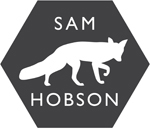I can't post the copy from my latest column as it's still in the shops, but here's a transcript from a previous issue - BBC Wildlife Magazine - Jan 2016 - 3 Ways to Photograph Winter Knot...
"January days are often brief and bitter, but head out to the mudflats and you’ll find one of the greatest photo opportunities of the year. This habitat is incredibly rich in worms and molluscs, attracting tens of thousands of knot and other waders. Their daily lives are governed by the tides, which makes it easy to predict their routine: feasting at low tide, roosting at high tide, and in between putting on spectacular aerial displays with clouds of birds twisting and wheeling in apparent unison. All of this drama is bathed in the warm, golden glow of the low winter sun. Sam Hobson
IN-FLIGHT FOCUS - Thousands of knot taking flight is a breathtaking sight. Wait for an incoming tide, when the birds are pushed up the beach towards the roost. At first they will take to the air in small, rippling waves, but as the tide creeps in, the flocks get larger and closer. Use a long lens to fill the frame or a shorter lens to capture the whole flock. Be ready for the moment when the birds turn away from you, revealing their silvery undersides like a shoal of fish catching the sun.
PICK A PORTRAIT - Focus on an individual to capture feather detail and behaviour. The feeding flock at low tide is more spread out, so keep to the edge, approach slowly and wait for them to come to you. Retaining a small channel of water as a barrier can help keep the birds at ease (be wary of dangerous channels, quicksand and rushing incoming tides, though).
RECORD A ROOST - The busy, high-tide knot roost is all about shoulder-barging and hustle and bustle. Use a tripod and slightly slow shutter speed to create a sense of movement as the birds shuffle around. Picking out another species within the flock, such as this oystercatcher, adds a focal point together with a splash of colour."


















